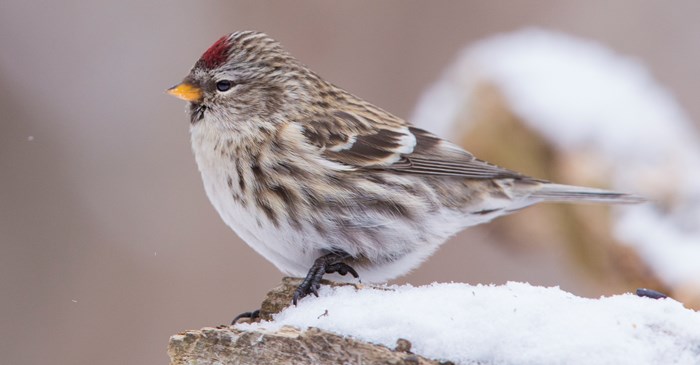This winter, those who live in the northernmost states might want to keep an eye out for lively flocks of red-capped Arctic visitors. The Common Redpolls are expected in the continental U.S. this winter, migrating from their breeding grounds in the uppermost reaches of Canada, in tundra and pine forested land near the Arctic Ocean. According to a migration forecast, one of their main food sources, the birch seed, was in short supply in 2016.
However, in seasons when there is enough to eat, the Common Redpoll will remain in their near-Arctic habitat all winter long. Their ability to survive some of the darkest and harshest winters on the planet highlights the surprising ways wildlife adapts. Despite being little birds that weigh only half an ounce, they can withstand temperatures as low as minus 65 degrees Fahrenheit. At night, they’ll tunnel into the snow, as far as 4 inches below the surface, to stay warm. They have the ability to store seeds in a pouch in their necks, and one study shows they can grow winter plumage that is one-third heavier than that of their spring.
If the Common Redpoll shows up in your yard, you may find they are not spooked by swinging feeders on a breezy day — they will just cling away and keep eating. Birders say they are not skittish around people, either, so you can enjoy a close-up view. Both males and females have red caps and some black at the base of their beaks. Males have a flush of pinkish feathers at their breast, while females are brown throughout.
To attract the Common Redpoll, set out food that they and other finches like, such as Nyjer seed in a tube feeder. For an excellent value, try Lyric Finch Small Songbird Mix, which blends Nyjer seed with sunflower kernels, small golden millet, canary seed and canola seeds.
